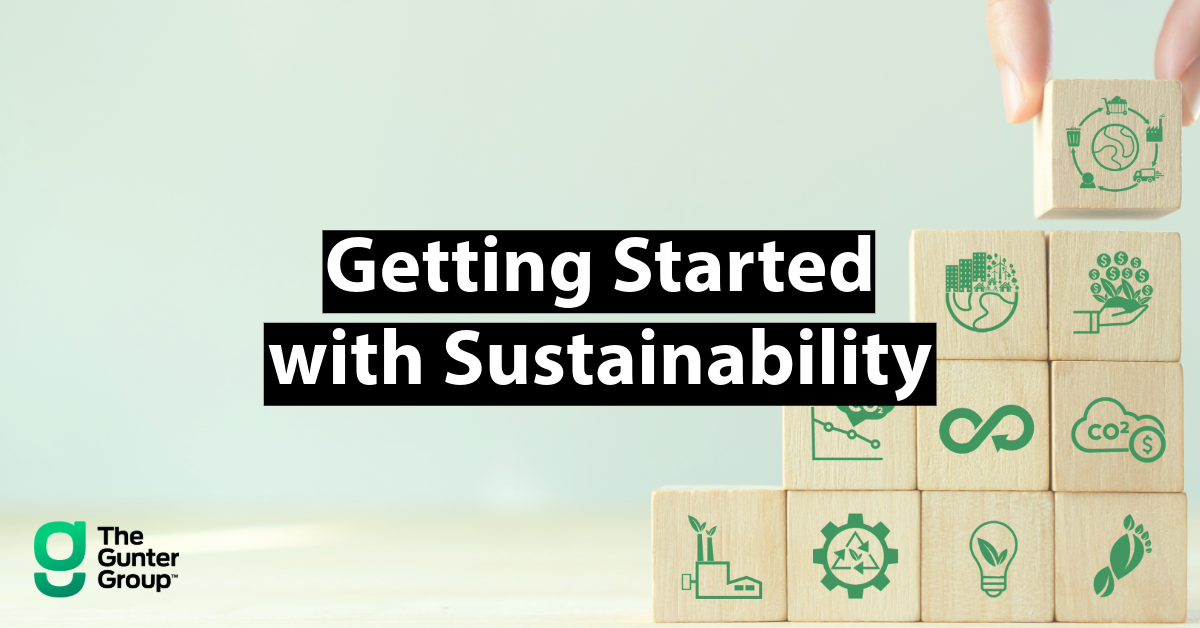As of October 2023, nearly half of Fortune 500 companies are participating in one or more climate initiatives. Patagonia has made it clear that their mission – their entire purpose for existing – is to tackle climate change. Another of the most notable sustainable companies, Unilever, is over a decade into efforts to transform its entire global supply chain.
But, what if your company is just getting started with conversations about sustainability? Amidst all of the various sustainability missions, strategies, and pledges, how does your company determine the best approach for them?
There is a vast sea of content and frameworks that exist across the corporate sustainability space to help companies with this question. Below is just a small sampling of the many frameworks and methodologies available to those looking to get started in sustainability:
However, when I think about how a company can most effectively get started in sustainability, I don’t gravitate towards any of the specific frameworks or methodologies listed above. I think of two simple prompts.
Prompt #1 – What does Unsustainable mean to your company? (A quick, simple definition of Corporate Sustainability: Running a business in a way that remains profitable/viable without negatively impacting people and the environment.)
Examples:
- Does your company experience challenges with resource inefficiency? For example: Our manufacturing sites are so old. Operating these sites requires a tremendous level of dependence on fossil fuels. Or, the amount of shipping currently required to run our business generates very high emissions.
- Is your company’s environmental impact a strike against your brand? For example: We have great products but millennials don’t feel value aligned with us (according to Nielsen, 75% of millennials consider sustainability before they make a purchase).
- Is your company over-invested in value streams likely to phase out in the future? For example: We manufacture oil containers. That’s what we do well. We are forecasting a significant decline in demand by 2030.
- Or perhaps your company is leaving innovation on the table? For example: We manufacture glass. Sales are stagnant. We haven’t experienced a high growth rate for decades. However, one of our engineers gave a presentation the other day describing how glass could be used to generate solar energy for buildings.
Do any of these examples resonate with your business?
I created these examples utilizing Bob Willard’s “4 Quadrants of Enterprise Sustainability” from the book The New Sustainability Advantage. Willard gave up an award-winning successful career in senior management at IBM to devote himself full-time to building corporate commitment to sustainability. He has a tremendous ability to help companies articulate their business case for sustainability. These 4 quadrants provide an excellent framework to help your company identify where to get started.
Prompt #2 – What are the downstream impacts that being “Unsustainable” has on your business?
- Is it resulting in unnecessary costs (impacting resource efficiency)?
- Is it keeping you from attracting the best candidates (hurting brand + reputation)?
- Is it restricting growth (limiting Innovation)?
- Is it a threat to your company’s longevity (creating too much risk on the balance sheet)?
These two prompts can help you better understand what getting started in corporate sustainability looks like for your organization. When surfacing these prompts with your team, don’t limit these initial discussions strictly to the leadership level. Don’t exclusively gravitate towards external key subject matter experts. There is likely a substantial level of passion that already exists within your organization on this topic. These initial questions pose a wonderful opportunity to engage your team in meaningful work. Meaningful work helps teams feel engaged and connected to a higher purpose, positively impacting team culture and employee experience. Take your time with these discussions and create opportunities for all to participate in crafting your company’s path forward in sustainability. It will pay dividends in the long run.
Once you’ve had these conversations and understand what sustainability means to your organization, you need to consider your existing capacity to embark on this work. Do you have the personnel, resources, and knowledge within the organization to be successful? This would be a great time to conduct a readiness assessment.
At The Gunter Group, we regularly perform readiness assessments for clients that are about to undergo an organizational transformation or major change initiative. We think about organizational readiness through our 4 service pillars: Strategy, People, Technology, and Execution. Below are questions applying these 4 service pillars that can help gauge your company’s readiness to embark on corporate sustainability:
STRATEGY
– Strategy Development: What are your high level objectives? How aligned are these with your complete picture?
– Strategy Governance: What will you need to put in place to ensure effective decision making?
– Strategy Management: How will leadership enable iteration and improvement in the strategic direction over time?
PEOPLE
– Organizational Design: What is the right level of collaboration for your strategy? What changes may be required to your organizational structure?
– Change Management: Are there groups of people within the organization that are likely to be resistant to these changes? How will your company go about bringing them onboard from the beginning to ensure a successful change adoption?
– Leadership Coaching & Development: What critical knowledge and experience gaps exist within the leadership team? What training and coaching is needed to equip leadership to support your company’s strategy?
TECHNOLOGY
– Enterprise Architecture: What technology gaps exist? Will you be in need of a software implementation or will there be a multi-year technical roadmap required to support your goals?
– Agile Practice: Large-scale change efforts that engage several facets of an organization are best executed through agile business practices. Does your company have experience with agile operating models, or is agile training needed?
– Decision Insights + Data Services: What will your sustainability strategy need from your organizational data structure and measurement capabilities? How can teams be better prepared for changing data requirements? Successfully executing against your company’s sustainability strategies will require understanding your organizational data structure and the availability of the data needed to support your goals.
EXECUTION
– Program + Project Leadership: Change initiatives are complex. What is the scope of the project? What frameworks will be relied on to support effective planning and project leadership?
– Business + Systems Analysis: What impacts will this change effort have on existing business processes and systems? Do you have the capabilities present within your organization to analyze change impacts?
– Operations + Process Improvement: Whether it’s waste reduction or operational inefficiencies, operational teams will be impacted by the sustainability strategy. How will they develop a clear understanding of necessary operational & process improvements and how to approach continuous improvement towards the end state?
Be prepared to pursue your sustainability strategies and goals similar to any other significant change effort. Involve your team in a cross functional, collaborative exercise, and don’t let sustainability get siloed within your organization.
At The Gunter Group, we have consultants spanning leadership levels that have experience leading successful change efforts as well as experience leading successful sustainability initiatives. Reach out to us if you’re interested in learning how TGG can support your company in getting started with corporate sustainability.


